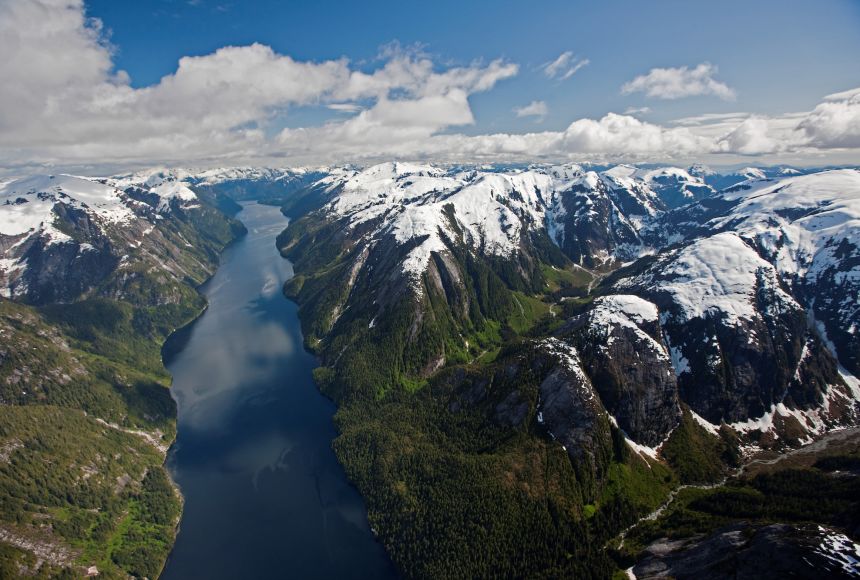What is the most important part of our planet, the main reason Earth is different from all the other planets in the solar system? If 10 different environmental scientists were asked this question, they would probably give 10 different answers. Each scientist might start with their favorite topic, from plate tectonics to rainforests and beyond. Eventually, however, their collective description would probably touch on all the major features and systems of our home planet. It turns out that no single feature is more significant than the others—each one plays a vital role in the function and sustainability of Earth’s system.
There are five main systems, or spheres, on Earth. The first system, the geosphere, consists of the interior and surface of Earth, both of which are made up of rocks. The limited part of the planet that can support living things comprises the second system; these regions are referred to as the biosphere. In the third system are the areas of Earth that are covered with enormous amounts of water, called the hydrosphere. The atmosphere is the fourth system, and it is an envelope of gas that keeps the planet warm and provides oxygen for breathing and carbon dioxide for photosynthesis. Finally, there is the fifth system, which contains huge quantities of ice at the poles and elsewhere, constituting the cryosphere. All five of these enormous and complex systems interact with one another to maintain the Earth as we know it.
When observed from space, one of Earth’s most obvious features is its abundant water. Although liquid water is present around the globe, the vast majority of the water on Earth, a whopping 96.5 percent, is saline (salty) and is not water humans, and most other animals, can drink without processing. All of the liquid water on Earth, both fresh and salt, makes up the hydrosphere, but it is also part of other spheres. For instance, water vapor in the atmosphere is also considered to be part of the hydrosphere. Ice, being frozen water, is part of the hydrosphere, but it is given its own name, the cryosphere. Rivers and lakes may appear to be more common than are glaciers and icebergs, but around three-quarters of all the fresh water on Earth is locked up in the cryosphere.
Not only do the Earth systems overlap, they are also interconnected; what affects one can affect another. When a parcel of air in the atmosphere becomes saturated with water, precipitation, such as rain or snow, can fall to Earth’s surface. That precipitation connects the hydrosphere with the geosphere by promoting erosion and weathering, surface processes that slowly break down large rocks into smaller ones. Over time, erosion and weathering change large pieces of rocks—or even mountains—into sediments, like sand or mud. The cryosphere can also be involved in erosion, as large glaciers scour bits of rock from the bedrock beneath them. The geosphere includes all the rocks that make up Earth, from the partially melted rock under the crust, to ancient, towering mountains, to grains of sand on a beach.
Both the geosphere and hydrosphere provide the habitat for the biosphere, a global ecosystem that encompasses all the living things on Earth. The biosphere refers to the relatively small part of Earth’s environment in which living things can survive. It contains a wide range of organisms, including fungi, plants, and animals, that live together as a community. Biologists and ecologists refer to this variety of life as biodiversity. All the living things in an environment are called its biotic factors. The biosphere also includes abiotic factors, the nonliving things that organisms require to survive, such as water, air, and light.
The atmosphere—a mix of gases, mostly nitrogen and oxygen along with less abundant gases like water vapor, ozone, carbon dioxide, and argon—is also essential to life in the biosphere. Atmospheric gases work together to keep the global temperatures within livable limits, shield the surface of Earth from harmful ultraviolet radiation from the sun, and allow living things to thrive.
It is clear that all of Earth’s systems are deeply intertwined, but sometimes this connection can lead to harmful, yet unintended, consequences. One specific example of interaction between all the spheres is human fossil fuel consumption. Deposits of these fuels formed millions of years ago, when plants and animals—all part of the biosphere—died and decayed. At that point, their remains were compressed within Earth to form coal, oil, and natural gas, thus becoming part of the geosphere. Now, humans—members of the biosphere—burn these materials as fuel to release the energy they contain. The combustion byproducts, such as carbon dioxide, end up in the atmosphere. There, they contribute to global warming, changing and stressing the cryosphere, hydrosphere, and biosphere.
The many interactions between Earth’s systems are complex, and they are happening constantly, though their effects are not always obvious. There are some extremely dramatic examples of Earth’s systems interacting, like volcanic eruptions and tsunamis, but there are also slow, nearly undetectable changes that alter ocean chemistry, the content of our atmosphere, and the microbial biodiversity in soil. Each part this planet, from Earth’s inner core to the top of the atmosphere, has a role in making Earth home to billions of lifeforms.
